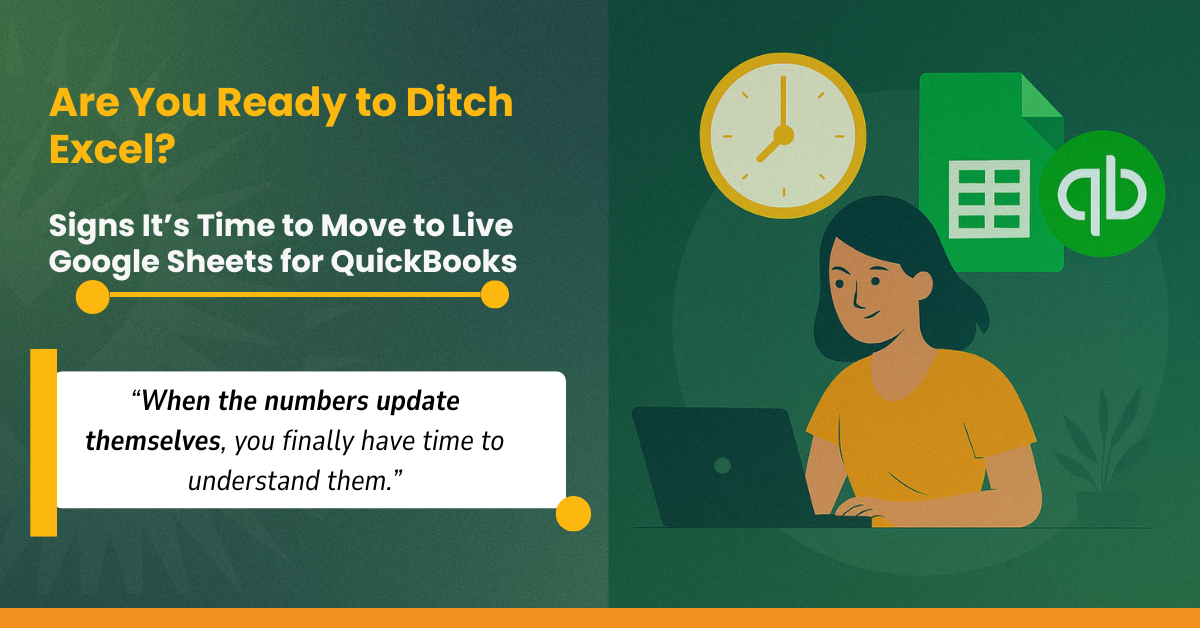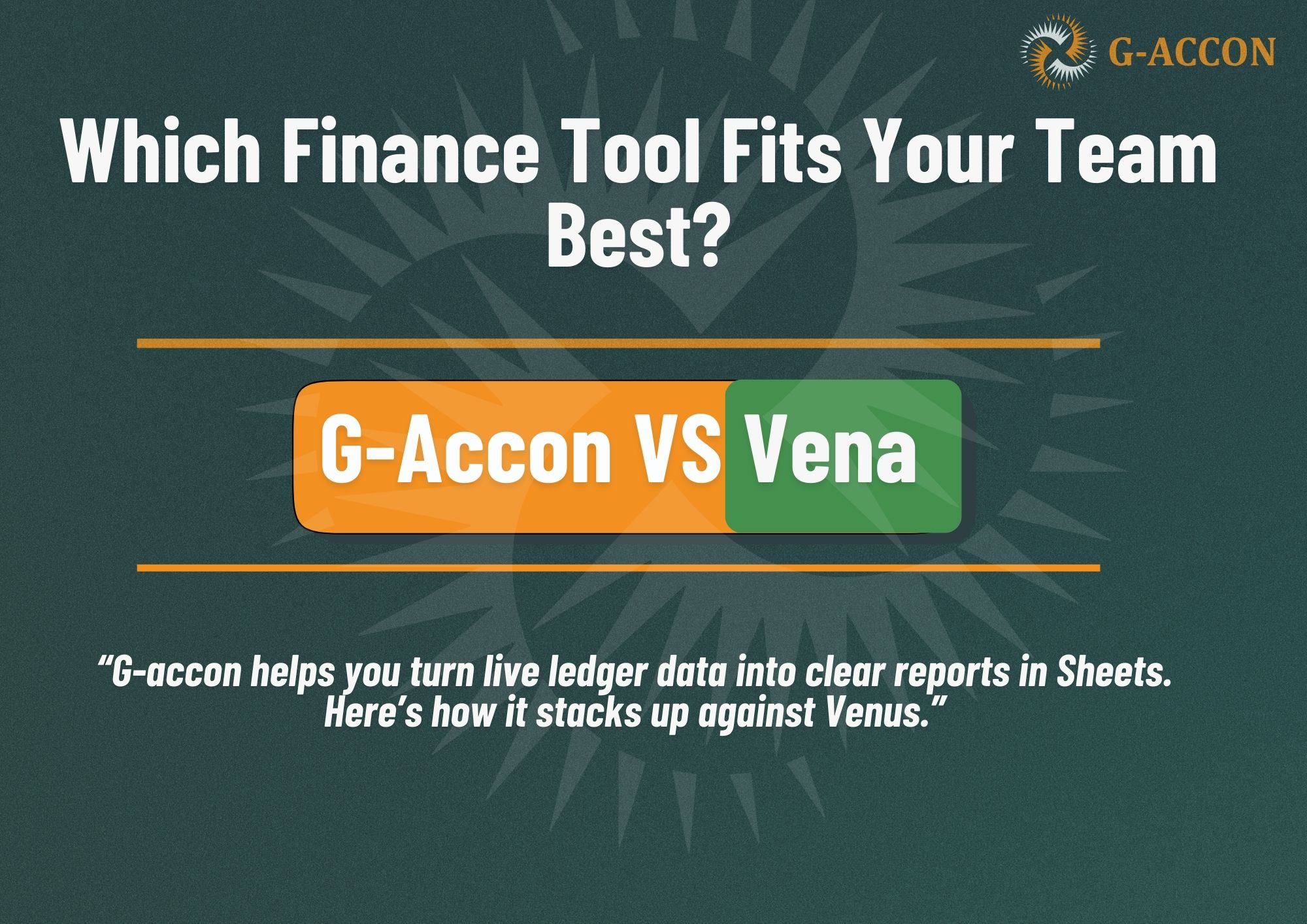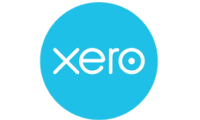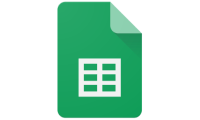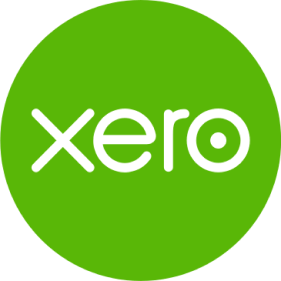Live-Synced Google Sheets are changing how finance teams work, and if you’re still managing reports in Excel, it might be time to ask why.
For years, Excel has been the safety net. The default. It’s flexible, familiar, and powerful in the right hands. But when your “workflow” includes exporting five reports, reformatting data, double-checking formulas, and emailing around version 12 of the same file... is it really still working?
New tools like G-Accon let you sync QuickBooks and Xero data directly into Google Sheets, live, in real time. No more exports. No more manual updates. And way fewer mistakes.
This article isn’t just a pitch for automation. It’s a real look at the signs your team might be ready to move on from static spreadsheets, and why it’s easier than you might think.
Why Excel Still Has a Hold on Us
Let’s start here.
People don’t stay with Excel because it’s the best. They stay because it’s familiar. It’s already built into their process. It works well enough. And for a long time, “well enough” was fine.
Until it’s not.
At some point, the cost of sticking with manual workflows creeps up quietly, then all at once. You realize you’re spending more time exporting, formatting, and error-checking than actually analyzing. And when you finally sit down to look at the numbers, they’re already outdated.
This isn’t just inconvenient. It’s dangerous.
According to MarketWatch, nearly 90% of Excel spreadsheets contain errors. Not because people are careless, but because people are human. Mistakes happen when you’re rushing, copying data, or adjusting one cell without realizing it breaks something else three tabs over.
You didn’t get into finance to chase formula errors. And your team certainly didn’t either.
So What Does “Live-Synced Sheets” Actually Mean?
Let’s clear up a common misconception.
Tools like G-Accon aren’t trying to replace spreadsheets. They’re trying to upgrade them.
You still work in a spreadsheet. You still use your formulas, your formatting, and your process. But now, instead of exporting data from QuickBooks or Xero every month, the data just shows up.
You can:
- Pull real-time transactions, balances, P&L, or forecasts directly into Google Sheets.
- Refresh data manually or automatically (daily, hourly, etc.).
- Push changes—like invoices or journal entries—back to QuickBooks.
- Filter reports by company, client, department, or date range—without building new templates.
Basically, it takes the tedious stuff off your plate so you can spend time on what actually matters: the numbers and what they’re telling you.
Signs You're Ready to Switch to Live-Synced Google Sheets
We’re not going to give you a checklist to check off. You already know how to spot problems when you see them. Instead, let’s talk through a few situations.
See if any of these sound familiar:
- Your team keeps asking, “Is this the final version?”
You’ve got one master Excel sheet floating around. You rename it 10 times. You upload it to Drive or send it over Slack. Then, someone edits the wrong copy. Chaos. - Your monthly reporting is 80% grunt work.
Download reports from QuickBooks. Clean the data. Paste it into Excel. Rebuild the chart. Fix the formulas that broke. Do it again next month. Repeat until retirement. - You’re scared to touch the spreadsheet.
Not because it’s hard, but because you’re not totally sure how it works anymore. “Didn’t Sarah build this template in 2019?” “Why is there a +1 here?” “Is this still pulling from the old GL?” - You’re working across multiple clients or entities.
If you’re managing five QuickBooks accounts, doing everything manually isn’t just annoying; it’s dangerous. Errors pile up fast. Your time disappears even faster.
If any of this sounds like your day-to-day, you’re not alone. But you’re also probably ready for something better.
Why Google Sheets Makes More Sense Than Excel (In This Case)
Here’s something you might not have thought about: Excel isn’t really built for real-time cloud syncing.
Yes, there are workarounds. Microsoft 365 has cloud options. You can use PowerQuery and all that. But honestly? For small to midsize accounting teams who just want clean live data in a spreadsheet, Google Sheets is the simpler play.
It’s collaborative. It updates in real time. And it plays nicely with apps like G-Accon out of the box. No coding. No “IT person” is required. If you're already using Google Workspace (or even just Gmail), the transition feels natural.
Why Some Teams Still Stick with Excel
Not everyone is ready to switch. That’s real.
Some firms have massive, deeply embedded Excel templates that would take weeks to rebuild. Some CFOs just really like their pivot tables. And for a few teams, the idea of live-syncing sounds like giving up control.
These are totally valid concerns. But here’s the flip side: what if you could keep your spreadsheet layout exactly the same but just let the data flow in automatically?
That’s what tools like G-Accon do. You can start by just pulling in one or two reports live. See how it goes. There’s no rule saying you have to move everything at once. It’s not about burning down Excel. It’s about making your workflow less painful.
What You Actually Gain (It’s Not Just Time)
Yes, syncing your data saves time. But it also gives you something more valuable: trust.
When your reports are live, you don’t have to wonder if they’re out of date. You don’t have to recheck that cell reference. You don’t have to hold your breath before sending a dashboard to a client.
You trust what you’re seeing. And that kind of confidence spreads. Your team works faster. Your clients feel better informed. You get to spend more time planning and less time fixing.
One G-Accon user shared that switching to live-sync Google Sheets helped them cut manual spreadsheet work by over 40%. That’s not just saved time—it’s reduced stress, too.
So, Are You Actually Ready?
Only you can answer that. But if your current system feels like it’s constantly duct-taped together, you probably don’t need a checklist to tell you it’s time.
You just need permission to change. And a path forward.
Start small. Try syncing one report. Build a dashboard in Sheets that updates without exports. Push a test entry from your spreadsheet into QuickBooks. See what it feels like.
You might be surprised at how quickly the old way starts to feel outdated.
Want to See It for Yourself?
If you’re curious about what this all looks like in action, check out how G-Accon works with QuickBooks and Xero to turn your spreadsheets into live, flexible, client-ready tools.
Learn how G-Accon compares to LiveFlow and others
Because you don’t need to leave spreadsheets behind. You just need them to catch up.













